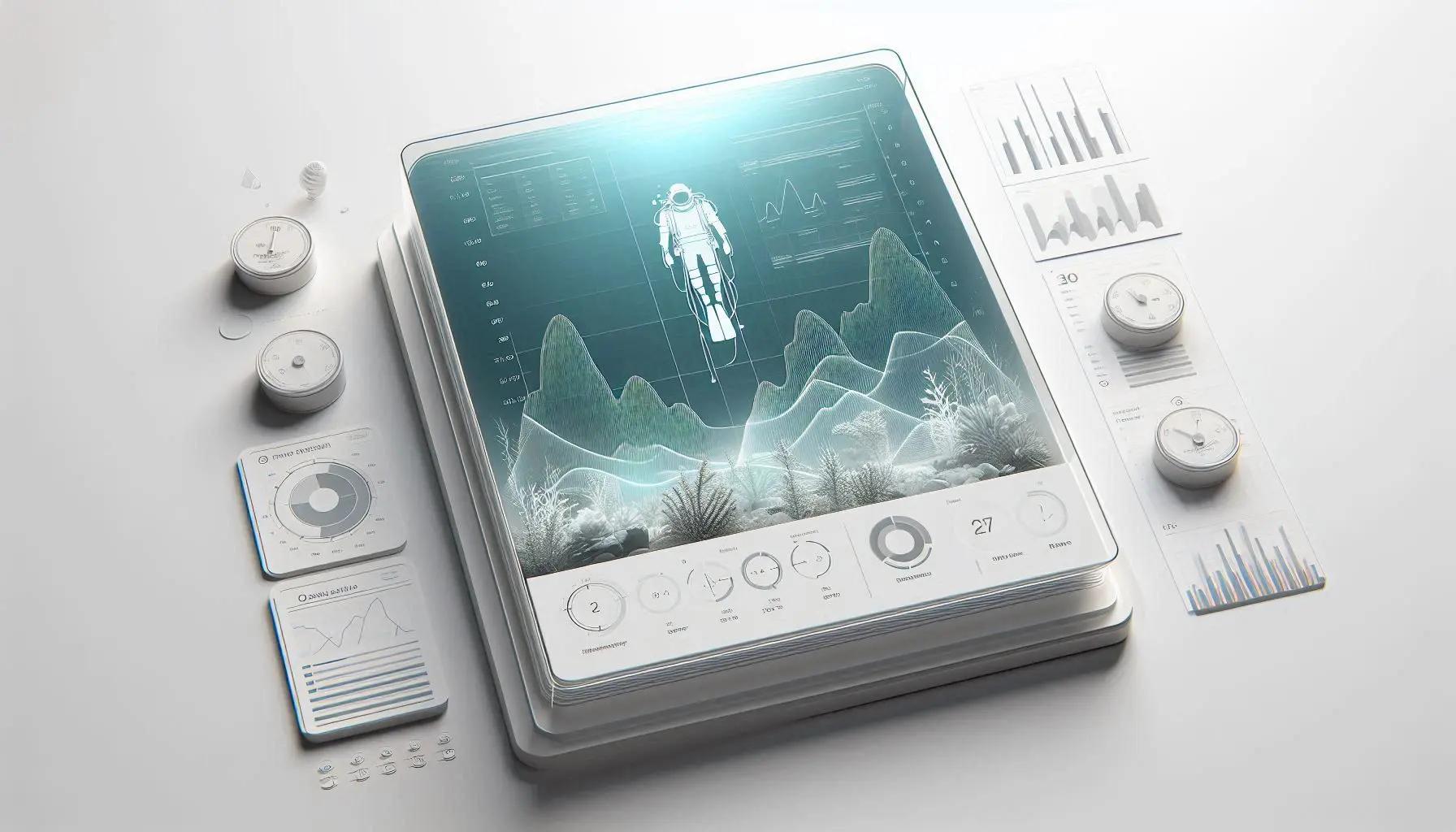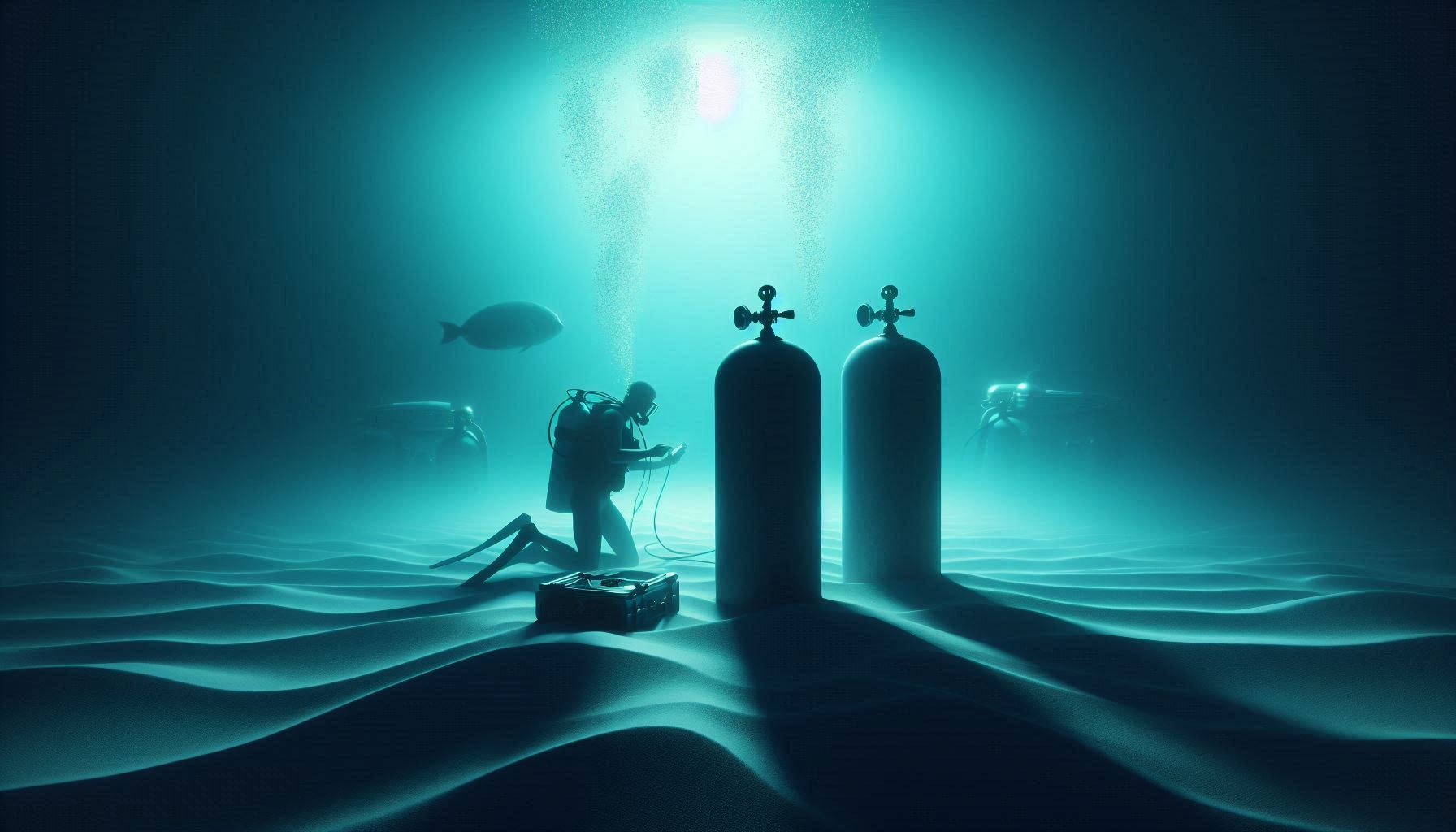
Essential Scuba Equipment Explained
If you're new to scuba diving, understanding what equipment you need can feel overwhelming. This guide breaks down the essential gear every beginner needs to know about, explaining each piece in simple terms. Whether you're preparing for certification or considering your first equipment purchases, you'll learn what each item does, how to choose it, and whether to rent or buy as a beginner.
What Breathing Equipment Do Scuba Divers Need?
Scuba Tanks (Cylinders)
What is it
A metal cylinder that holds compressed breathing gas.
What it does
Stores high-pressure air you'll breathe during your dive.
For beginners
You'll typically rent tanks from your dive center. They handle filling and maintenance.
The Regulator System
What is it
A device that connects to your tank with multiple hoses.
What it does
Converts high-pressure tank air to breathable ambient pressure.
Components
- First stage (connects to tank)
- Primary second stage (main mouthpiece)
- Alternate air source/octopus (backup breathing source)
- Pressure gauge (shows remaining air)
What is a BCD in Scuba Diving?
What is it
A wearable jacket or harness system (Buoyancy Control Device).
What it does
- Holds your tank securely
- Controls buoyancy underwater (float, sink, or hover)
- Provides surface flotation before/after dives
For beginners
- Jacket-style BCDs ($250-450): Wrap around torso, most beginner-friendly
- Back-inflation BCDs ($350-550): More streamlined, bladders behind back
- Travel BCDs ($300-600): Lightweight for frequent travelers
How to Choose Scuba Exposure Protection
Water conducts heat away from your body 20-25 times faster than air, making thermal protection essential.
Wetsuits
What is it
Neoprene suit that traps a thin water layer against your skin.
| Water temperature | Recommended Thickness | Style |
|---|---|---|
| 80°F+ (27°C+) | 1-2mm or rashguard | Shorty or full |
| 73-79°F (23-26°C) | 3mm | Full |
| 66-72°F (19-22°C) | 5mm | Full with hood |
| 50-65°F (10-18°C) | 7mm | Full with hood, boots, gloves |
Drysuits (For Cold Water)
What is it
Completely waterproof suit with seals at neck and wrists.
The peculiarity of this suits is that they keep water out entirely. To us them you wear insulating undergarments. Requires specialized training due to different buoyancy characteristics.
Scuba Masks and Fins Selection Guide
These items significantly impact comfort and are typically the first purchases for new divers.
Dive Masks
What it does
Creates an air space for clear vision and allows equalization.
Finding the perfect fit:
- Without using the strap, place against your face
- Inhale slightly through nose to create suction
- If it stays in place without hands, it fits well
Fins
Types:
- Open-heel fins ($60-200): Used with boots, better for cold water
- Full-foot fins ($40-150): Slip-on design for warm water
- Split fins: Reduced effort, good for long swims
- Blade fins: More power for currents
Essential Safety Equipment for Scuba Diving
Dive Computer
What it does
- Tracks depth and bottom time
- Calculates safe no-decompression limits
- Monitors ascent rate
- Records dive profiles
Why it's essential
Significantly reduces decompression illness risk compared to tables.
Entry-level options ($200-400):
- Suunto Zoop Novo
- Mares Puck Pro
- Cressi Leonardo
Surface Marker Buoy (SMB)
What it does
Marks your position to boats during ascent or at the surface.
Why it's essential
Dramatically increases visibility in areas with boat traffic.
Cutting Tool
What it does
Frees you from entanglement (fishing line, kelp, etc.) in difficult situations.
Options
EMT shears, line cutters, or small knives ($15-80)
Scuba Equipment Costs: What to Budget
| Equipment Category | Rental (per day) | Entry-Level Purchase |
|---|---|---|
| Mask, Fins, Snorkel | $15-25 | $100-200 |
| Regulator Set | $20-30 | $300-500 |
| BCD | $15-25 | $250-400 |
| Exposure Protection | $10-30 | $150-400 |
| Dive Computer | $10-25 | $200-400 |
| Safety Accessories | $5-15 | $100-200 |
| TOTAL | $75-150/day | $1,100-2,100 |
Should You Rent or Buy Scuba Equipment?
Best Equipment to Buy First
- Mask, fins, snorkel ($150-300): Personal fit is crucial
- Dive computer ($200-500): After 10-20 dives
- Exposure protection for your main diving environment
- Regulator and BCD after gaining more experience
When Renting Makes Sense
- You dive less than 10 days per year
- You travel to diverse destinations
- You have limited storage space
- You're still exploring equipment preferences
When Buying Makes Sense
- You dive more than 10-15 days annually
- You regularly dive in similar conditions
- You value consistent equipment configuration
- The break-even point is typically 15-20 dive days
FAQs About Scuba Equipment
Do I need to buy all my scuba equipment at once?
No, most beginners start with mask, fins, and snorkel while renting the rest. Add pieces gradually as you gain experience.
What is the difference between scuba gear and snorkeling equipment?
Snorkeling equipment includes only mask, snorkel, and fins for surface swimming. Scuba diving requires additional life-support equipment for breathing underwater.
What scuba equipment needs professional servicing?
Regulators, BCDs, and tank valves require annual professional servicing. Tanks need visual inspection annually and hydrostatic testing every 5 years.
What is the most important piece of scuba equipment to buy first?
A properly fitting mask is unanimously considered the most important first purchase, as poor visibility creates stress and ruins the experience.
How do I choose between a wetsuit and drysuit?
Water temperature is the primary factor. For waters below 60°F (15°C), drysuits are recommended. Between 60-70°F (15-21°C), thick wetsuits work for most divers. Above 70°F (21°C), standard wetsuits are typically sufficient.


